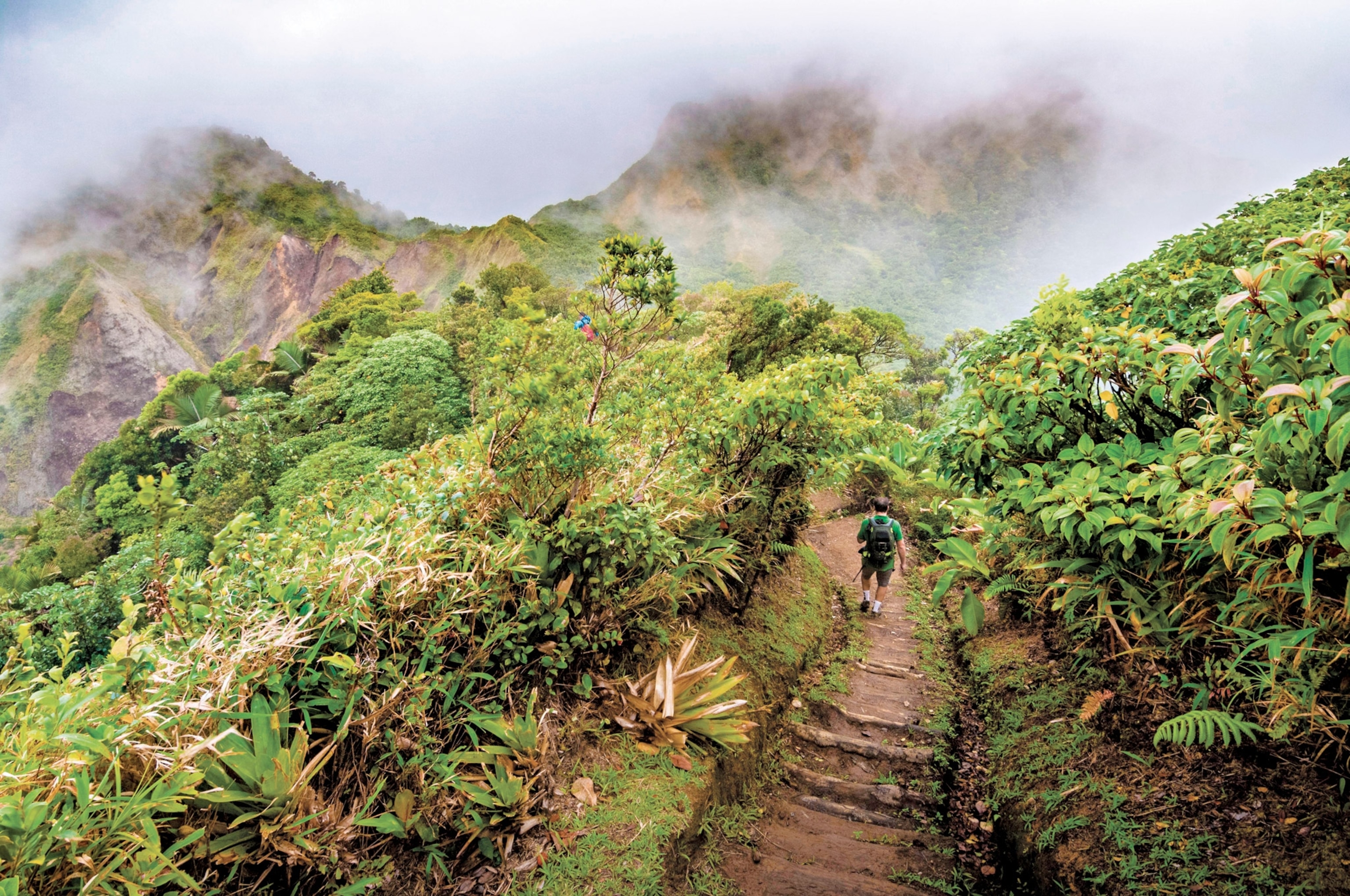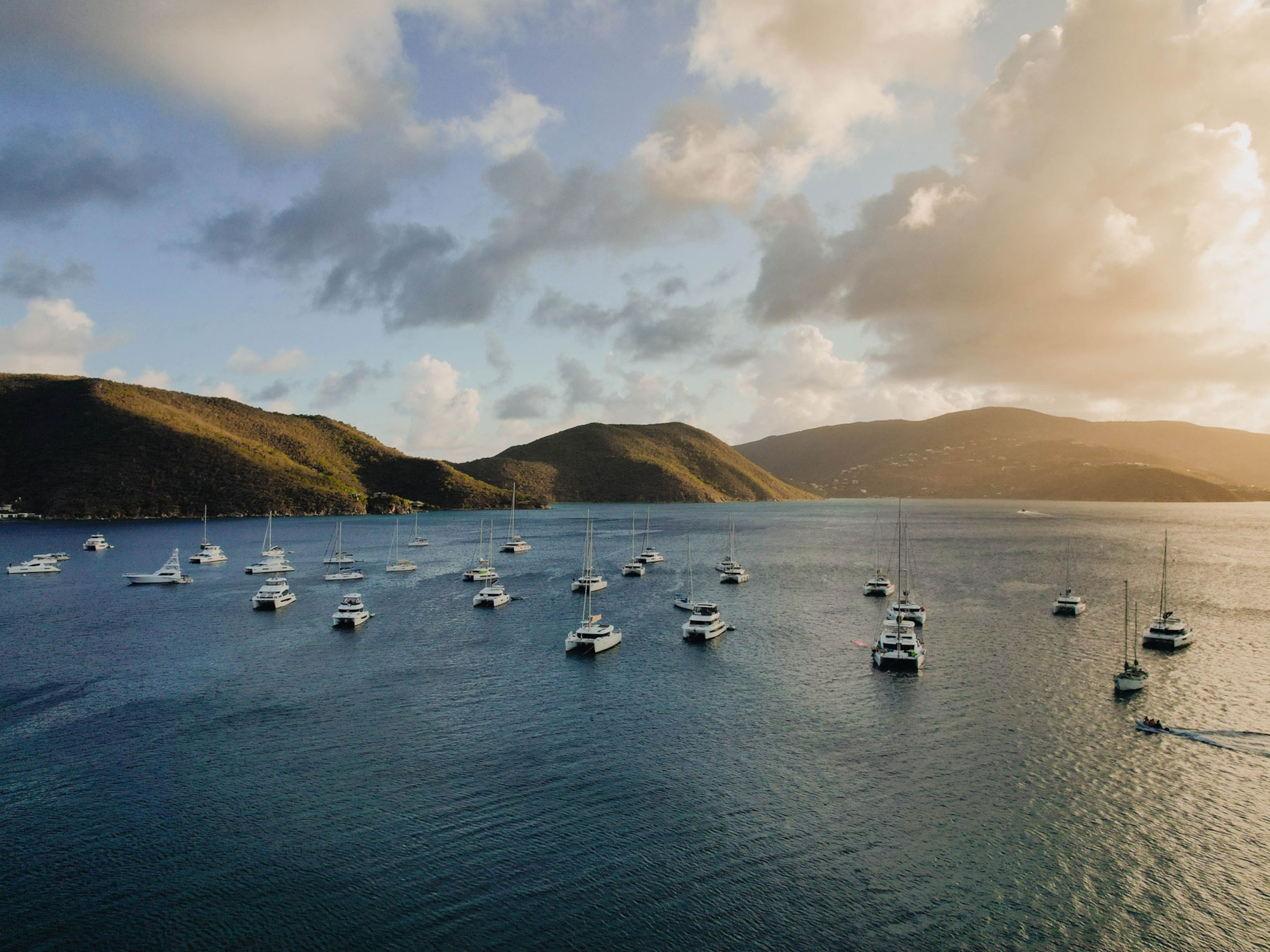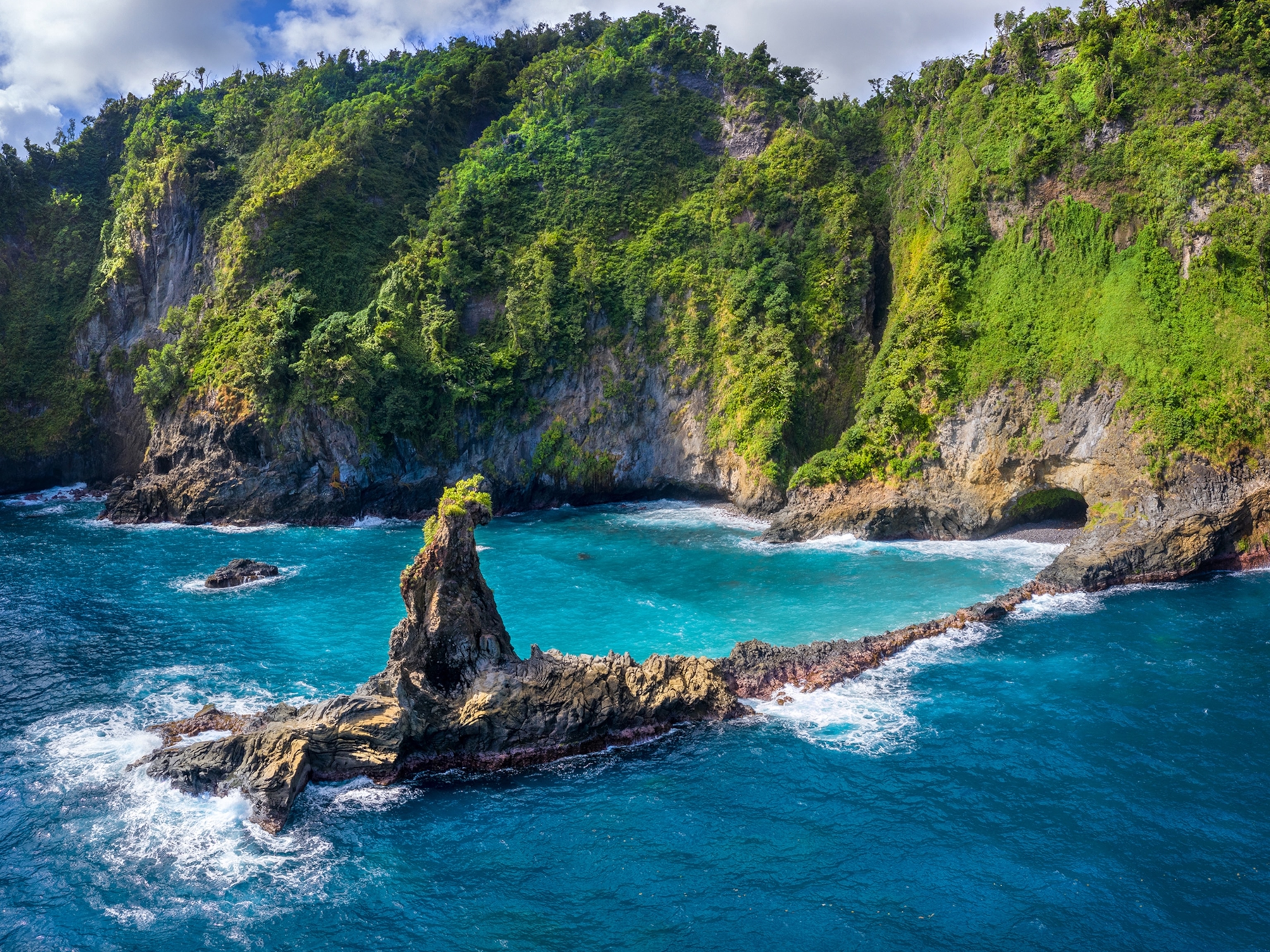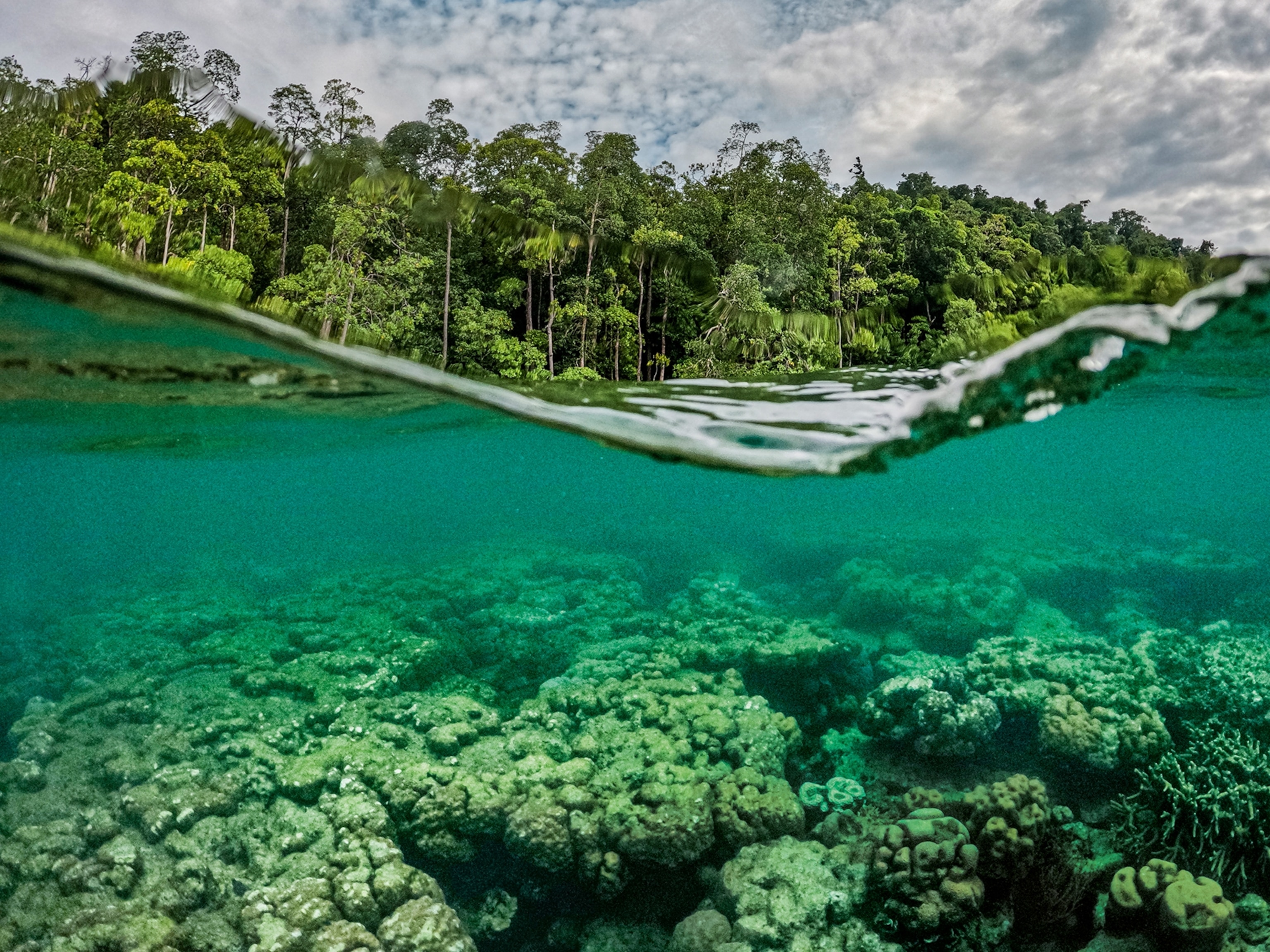
Big-time adventures on an island where nature rules
Discover Dominica’s wild side, from treks around a boiling lake to swims with sperm whales.
Nature dictates the day plan in Dominica—especially for adventure travelers. With mountainous rainforests, black sand beaches, and dramatic underwater realms, this island nation located between Guadeloupe and Martinique has emerged as one of the world’s prime ecotourism destinations.
Don’t expect the typical Caribbean tourist scene here, as Dominica has resisted the mass-market glitz that defines its more developed neighbors. Some experiences, such as snorkeling with the resident sperm whales, are purposefully low volume. To safeguard the whales’ welfare, only a few permits are granted each year to accredited tour operators, such as Wildlife Photo Tours, which must follow strict regulations.
The island has achieved a remarkable recovery from 2017’s Hurricane Maria, making now an excellent time for not-so-everyday excursions including fishing for an invasive species, trekking to a massive hot spring, and canyoning in deep gorges.
Read what Dominica’s doing to become the world’s first “hurricane-proof” country.
Here’s how to explore a land where wilderness rules.
Hike to a boiling lake
Countless trails crisscross Dominica’s mountainous terrain, clinging to cliffs above black sand beaches or winding through lush jungle. Some routes, like the path to Emerald Pool or the Syndicate Nature Trail, reward almost instantly with cascading falls and parrot sightings, while the 115-mile Waitukubuli National Trail—the longest in the Caribbean—reveals its magic more slowly.
But it’s the hike to Boiling Lake, a flooded fumarole deep in the rainforest, that is Dominica’s most iconic. The six-hour trek (out and back) passes through the Morne Trois Pitons National Park into an alien-looking landscape of steaming vents, mud pots, and sulfur springs known as the Valley of Desolation.

Rappel into a canyon
Every year Dominica receives more than 300 inches of rain—or liquid sunshine, as the locals call it. Over millennia, deep gorges formed, which conceal pristine waterfalls and rushing rivers. Akin to a natural water park, the resulting topography is ideal for canyoning—a thrilling blend of hiking, climbing, rappelling, and swimming.
Inside stone chutes, bromeliads and ferns sprout from crevices in moss-covered walls flanking crystalline pools far below. Take the plunge with Extreme Dominica, which offers excursions geared toward novices. After getting your feet wet in smaller canyons, try the 260-foot rappel down Trafalgar Falls or a night adventure by headlamp.
Looking for more seaside escapes? See 21 of the world’s best island resorts.
Hunt for your dinner
Native to the Indo-Pacific, lionfish are an invasive species in the Caribbean, where they feed voraciously with no predators—except for hungry humans. On Dominica’s southwestern tip, Nature Island Dive’s Simon Walsh teaches hunting techniques to skilled scuba buffs before leading lionfish spearing missions at some of the island’s best dive sites.
One of these is in Soufrière-Scott’s Head Marine Reserve, a submerged volcanic crater. Coral and rock formations create an underwater zone supporting a proliferation of colorful creatures. Easy access from shore means that snorkelers, too, can take in Soufrière Bay’s subaquatic scenery.
- National Geographic Expeditions





